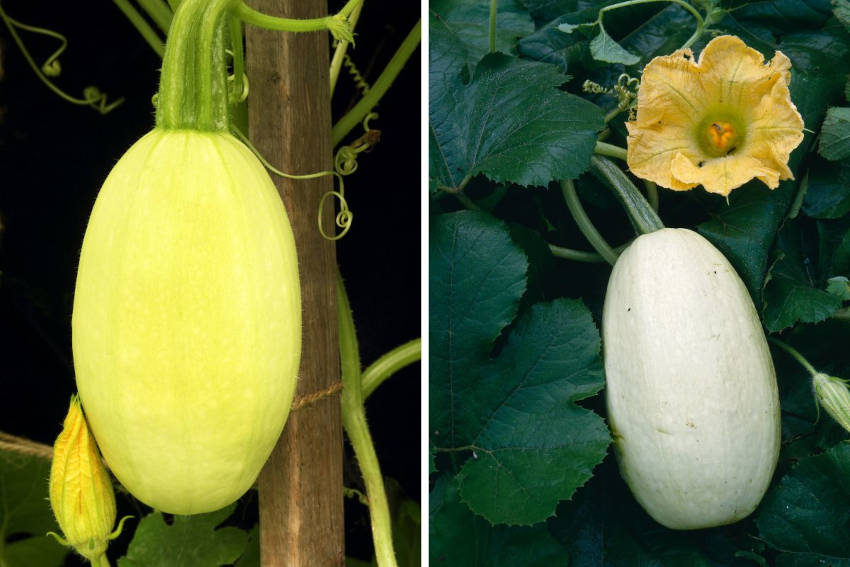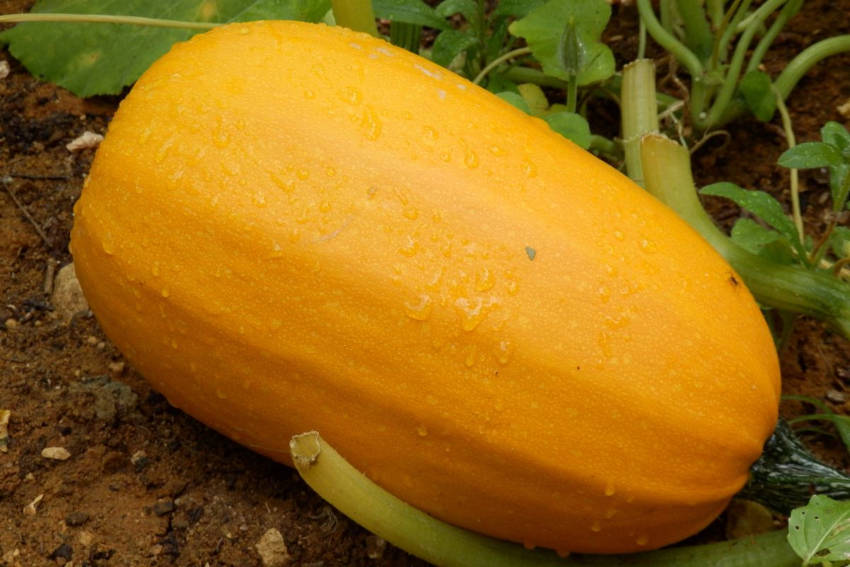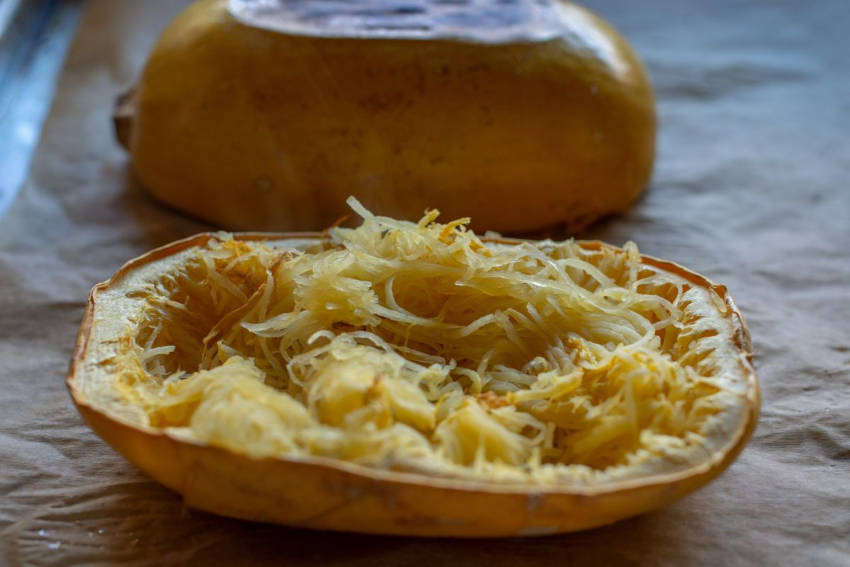A delicious vegetable that's easy to grow, productive, and brings a unique texture to the table sounds like a surefire winner all round. Spaghetti squash offers all these qualities, and it's a crop that deserves much greater popularity in home gardens than it currently enjoys.
Known botanically as Cucurbita pepo, spaghetti squash is also called vegetable spaghetti, noodle squash, spaghetti marrow and countless other variations on the pasta-and-squash theme. It takes these common names from the distinctive appearance of its flesh when cooked, which naturally falls apart into strands that closely resemble spaghetti. Indeed, the cooked flesh can be scooped out and used as a low-carb, gluten-free alternative to pasta, as well as being served as a veggie in its own right.
How to Grow Vegetable Spaghetti Squash
Spaghetti squash is classified as a ‘winter squash’, though don’t be deceived by the name, which refers to this vegetable’s ability to be stored over winter. It’s still a warm season vegetable that should be grown over the summer months. Spaghetti squash is thought to be a native of Mexico, and while it's happiest growing in the heat it can handle summers in cooler climates so long as it avoids frost. It grows in a similar way to other winter squash varieties, producing long, sprawling vines which can either be left to trail across the ground or secured to a sturdy trellis to grow vertically and save space.
Either way, the seeds should be sown roughly a metre apart in each direction, at a depth of 1.5cm, and in well-drained soil that enjoys full sun.
Spaghetti squash is a vigorous grower and needs plenty of nutrients for successful fruiting. Before sowing the seeds, prepare the soil by digging in well-rotted compost or by trench composting: digging a trench in autumn or winter, filling it with compostable material, and leaving plenty of time for the contents to rot down before sowing.
Flowering, Fruiting and Harvesting
As with other cucurbits, spaghetti squash produces both male and female flowers on each vine, and hand-pollination may be needed to set the fruit if the local bees aren't overly attentive to their duties.
Once pollinated, the female flowers will go on to produce fruits, averaging four to five on each vine. After the first baby fruits have appeared, pinch off any extra flowers along with the vine's growing tip to direct all its energy into the fruit, which can reach 30cm in size under ideal conditions.
If you're growing the vines on the ground, place a wooden board or clump of straw under each fruit to stop it rotting on the damp soil. If growing on a trellis, secure each fruit's stem firmly so that it can hold its full weight as it matures.
The squash are ready to harvest once the vine dies back. Simply cut off each fruit using a sharp knife, leaving a few centimetres of stem attached to improve storage longevity. The squash can be used immediately, but if you want to store them, leave them in a warm, airy place for 10 to 14 days to cure, which will harden up the skin for a longer storage life. The squash can then be kept in a dark, cool and dry place for up to three months.
Ideas for Cooking Spaghetti Squash
Spaghetti squash is a versatile, mild-tasting ingredient that can be baked, steamed or boiled. However you choose to cook it, prepare the squash by cutting it in half lengthwise and scooping out the seeds, which can be washed and dried to sow later if desired. Tough stalks can also be trimmed off to improve appearance and make the fruit easier to cut.
The simplest cooking method is baking, and there are two basic ways of doing it. For both, first preheat the oven to 200C, then either:
- Take the halved and deseeded squash and drizzle the cut sides with olive oil and your choice of seasonings including salt, pepper, paprika and herbs. Place the halves cut side down on a shallow baking tray; or
- Place unoiled halves cut side down on a shallow baking tray or dish and add a cup of water to the tray to help the squash stay moist.
Whichever method you use, bake for 30-50 minutes depending on the fruit's size, checking whether it's cooked through by inserting a skewer. Take care not to overcook or the unique noodle-like texture can quickly be lost.
Once it's fully cooked, the flesh can be scooped out, seasoned, and mixed with a little butter and parsley to serve as a side dish. Alternatively, top with grated cheese or a pasta sauce then grill for a hearty main. Try mixing with spaghetti, cream, and cheese to bake as a gratin, or mash up the squash strands with flour and egg to make fritters to fry in a little oil.
However you enjoy it, spaghetti squash is a unique and productive vegetable that's worth trying in your garden.









